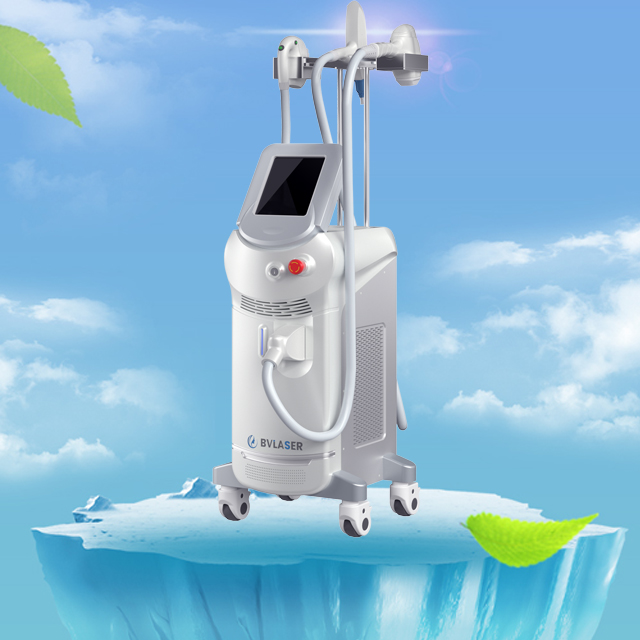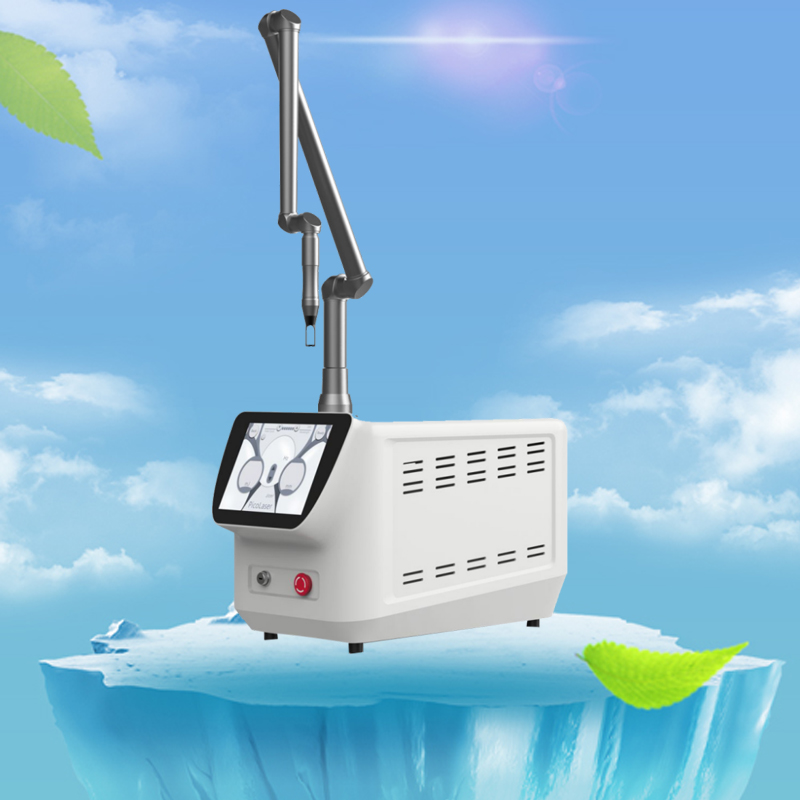What Is Non-Invasive Body Contouring?
Author:baishilf Time:2024-12-26 15:16:24
Body contouring, also known as body sculpting, refers to changing the shape of an area on your body and is used to describe a variety of effects such as:
*Changing the circumference of an area on your body like your waist or thighs.
*Changing your body’s silhouette by reducing small areas of fat.
*Improving tone and firmness of certain muscles.
*Improving the appearance of cellulite.
Some non-invasive body contouring devices are designed to achieve your desired effect by decreasing small amounts of excess fat in the treated body area. Body sculptor machine can help reduce visible bulges by reducing the amount of fat that is in the bulge. Some non-invasive body contouring procedures that are meant to only improve the appearance of cellulite, even if they do not change the shape of your body, are grouped with body contouring. Cellulite appears as large dimples, such as on the thighs and buttocks, between small mounds of soft fat. It is thought that the soft, fatty mounds are caused by extra fluid between the fat cells, while the dimples are caused by short strands of connective tissue (fibrous septae) that pull the skin down into and through the fat to connect the skin to the underlying bands or sheets of connective tissue (fascia) between the skin and muscle. Many of the procedures result in temporary improvement in the appearance of the bulge or cellulite. Ask your health care provider how many treatments will be needed, how long the effects are expected to last, and whether additional procedures will be needed to maintain the effect. For more information about body contouring devices that have marketing authorization from the FDA, see the below.
Risks Associated with Non-Invasive Body Contouring Technologies
As with any medical procedure, there are risks and complications associated with using body contouring devices. Each technology described below has its own set of risks and may have certain limitations on who can be treated safely.
Minor complications may occur shortly after a procedure and last only a short time. However, some complications may last a long time, become permanent, or require surgery to correct. If you are considering body contouring, do your research. Talk with your health care provider and read the device manufacturer information to understand your personal risk factors and whether the effect you are seeking is reasonable. Be sure to understand all your options and consider each device’s benefits, limits, and the risks involved.
Complications reported for all body contouring devices may include:
*Pain or discomfort.
*Redness.
*Swelling.
*Bruising.
*Nodules (lumpiness you can feel but not see).
Additional complications have been reported for certain body contouring devices. See the following section on non-invasive body contouring technologies for more information.
Non-Invasive Body Contouring Technologies
Non-invasive body contouring devices and procedures are performed on the skin surface. They do not involve incisions (cutting the skin). Before a non-invasive body contouring device is legally authorized for the market, the FDA reviews the safety and effectiveness of the device for the intended uses and body sites on which the device is intended for use. The technologies used in these devices are described here. The descriptions are organized by whether the technology is thermal (cools or heats tissue) or non-thermal (does not cool or heat tissue).
Thermal: Cold (Cryolipolysis or Fat Freezing)
Cryolipolysis slimming machine, also referred to as fat freezing, uses cold temperatures that are intended to kill fat cells and reduce visible fat bulges without surgery. A targeted area of pinchable fat is drawn by a vacuum into an applicator, where it is cooled for up to an hour. Because fat cells are uniquely sensitive to cold, the controlled cooling is intended to kill the fat cells and not freeze the skin. The fat released from the damaged fat cells is slowly cleared by the body’s immune system, usually within two to three months. This causes the fat bulge to become smaller over time. Cryolipolysis fat freezing machine that use this technology are for prescription use only. The safety and effectiveness of over-the-counter or home use fat freezing has not been established.

You should not have a cryolipolysis fat freezing procedure if you have one of the following cold sensitivity disorders that can affect the blood or skin:
*Raynaud’s disease, pernio, or chilblains—conditions in which cold temperatures cause poor blood circulation in the skin.
*Cold urticaria—a condition in which exposure to cold causes hives.
*Cryoglobulinemia—a condition in which clumps form in your blood when you are exposed to cold.
*Paroxysmal cold hemoglobinuria or cold agglutinin disease—disorders in which red blood cells are damaged by cold temperatures.
*Poor blood circulation in the area to be treated.
After a Cryolipolysis fat freezing procedure, some patients may develop complications at the treatment site.
Common complications that may resolve without intervention:
*Redness.
*Bruising.
*Swelling.
*Pain or discomfort.
*Skin discoloration.
Less common complications that may require intervention and may have long-term effects:
*Numbness that can persist for several weeks.
*Nodules (small, temporary lumps in the fat that can be felt but not seen).
*Freeze burns on the skin, which can be severe (partial or full thickness burns).
*Damage to a nerve that causes a temporary change in the position of the lip or tongue, if used under the jawline.
*Temporary sensation of fullness at the back of the throat, if used under the chin.
Least common but more serious complications that may require surgery to be addressed. Surgery may or may not resolve these complications:
*Paradoxical Adipose Hyperplasia (PAH) is a phenomenon in which fatty tissue grows instead of shrinking in the treated area. PAH is a raised, often rectangular bulge of hard, fatty tissue. It is very firm and is usually the same shape as the treatment applicator. PAH is unique to fat freezing. Reported cases developed two to five months after a fat freezing procedure. PAH does not go away on its own and may require surgery to remove the visible bulge.
*Hernia is a bulging of an organ or tissue through a weak area in the abdomen or abdominal wall lining. There have been reports of hernias in the treated area after a fat freezing procedure. The procedure should not be performed in or near the area of a pre-existing hernia or structurally weak areas, such as surgical scars or the separation between the stomach muscles, commonly seen after pregnancy.
Magnetic Field
Pulsed magnetic fields work by triggering a small electric current in the muscles. This short, low energy current causes muscles to contract. Repeated muscle contraction during the procedure may improve muscle tone and firmness of the abdominal muscles and muscles of the arms, or strengthen, tone, and firm the buttocks, thighs, and calves. These effects may be temporary and may require you to have ongoing procedures to maintain the effects.

Do not use magnetic field body sculptor machine if you have:
*Active implants, such as a pacemaker or an implantable cardioverter defibrillator.
*Metal under your skin from an implant or injury.
Complications may include:
*Muscle soreness.
*Cramps.
Mechanical (Massage or Vibration)
Massaging the skin and fat, using a rolling or vibrating handpiece, may temporarily improve the appearance of cellulite on the body in the treated area. Sometimes a handheld “shock wave” device may be used to cause vibration like a small jackhammer. Pressure and vibration are thought to work like a lymphatic massage, by removing the extra fluid between the fat cells and improving the bumpy appearance of cellulite. Stretching the skin may also trigger collagen formation and may give the skin a more youthful appearance.
Do not undergo this procedure if you have conditions such asvibrational or pressure urticaria (itching or burning) that cause allergic symptoms or hives to develop with vibration or pressure.
Complications may include:
*Pain or discomfort.
*Bruising.
If You Are Considering Non-Invasive Body Contouring
1.Understand that while noninvasive body contouring may be performed in a variety of facilities, noninvasive body contouring is a medical procedure with benefits and risks.
2.Talk with your health care provider about the benefits and risks associated with body contouring devices and procedures.
3.Talk with your health care provider about which procedures may be best for you. For individuals with darker skin types there is a potential of darkening or lightening of the skin after a body contouring procedure.
4.Read any available patient brochures to understand your personal risk factors and whether the effect you are seeking is reasonable. Take time to read the information and ask questions.
5.Understand that any body contouring device could potentially cause complications. Most complications occur shortly after a procedure and may last only a short time. However, some complications may last a long time, become permanent, or require surgery to correct.
6.Know that non-invasive body contouring is not intended to treat obesity or to improve your health. It will not result in weight loss or contribute to the health benefits associated with weight loss.
7.Understand that not everyone responds to body contouring procedures or achieves their desired effect, results may be temporary, and you may need more than one treatment.
8.Ask the health care provider who is performing your procedure how they clean devices between patients and whether there are any disposable parts. If they use disposable parts, ask whether a new disposable piece is used for each procedure session.
9.Inform the health care provider who is performing your procedure:
*About all medications you take, including over-the-counter supplements and vitamins.
*If you have any implanted medical devices, including a pacemaker, artificial joints, or metal implants or screws.
*If you have an intra-uterine device (IUD), contraceptive coil, mesh, tattoo, scar, cosmetic implant, or have had surgery in the treatment area.
Tell your health care provider if you:
*Take anticoagulant (blood thinner) therapies.
*Are immune deficient or immune suppressed because of a medical condition or medications.
*Have a known history of clotting or bleeding disorders such as hemophilia.
*Have uncontrolled diabetes (high blood sugar).
*Have an active skin infection, including bacterial, viral, or fungal infection.
*Have an infection such as hepatitis or human immunodeficiency virus (HIV).
*Have or had eczema, psoriasis, vitiligo, or autoimmune disease.
*Have keloidsExternal Link Disclaimer or a family history of keloids (very prominent scars).
*Have an active rash, wart, mole, or birthmark on the area to be treated.
*Have a known malignancy or are undergoing or about to undergo treatments using chemotherapy, radiotherapy, or steroids.
*Are currently taking acne medication with the ingredient isotretinoin (Accutane) or have taken isotretinoin in the past six months.
*Are tan or planning to be in the sun in the two weeks following the procedure.
*Are pregnant or breastfeeding.
*Are allergic to stainless steel or to plastic or rub.






















